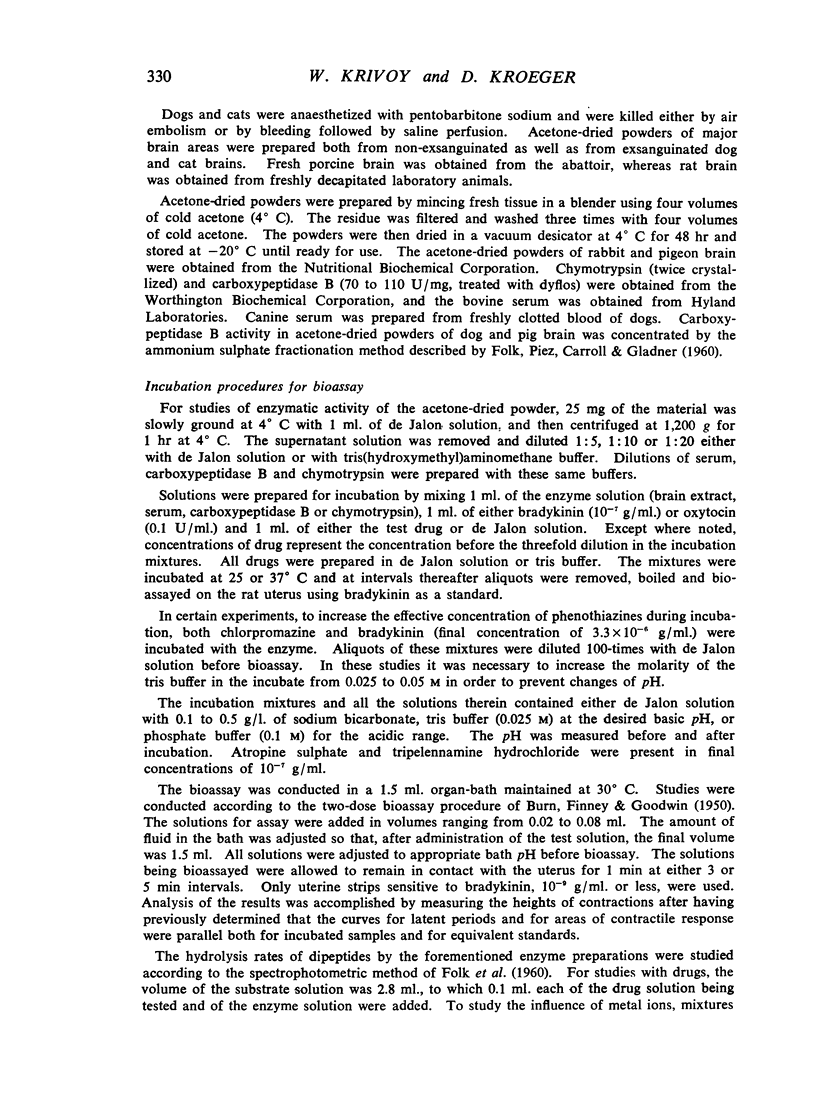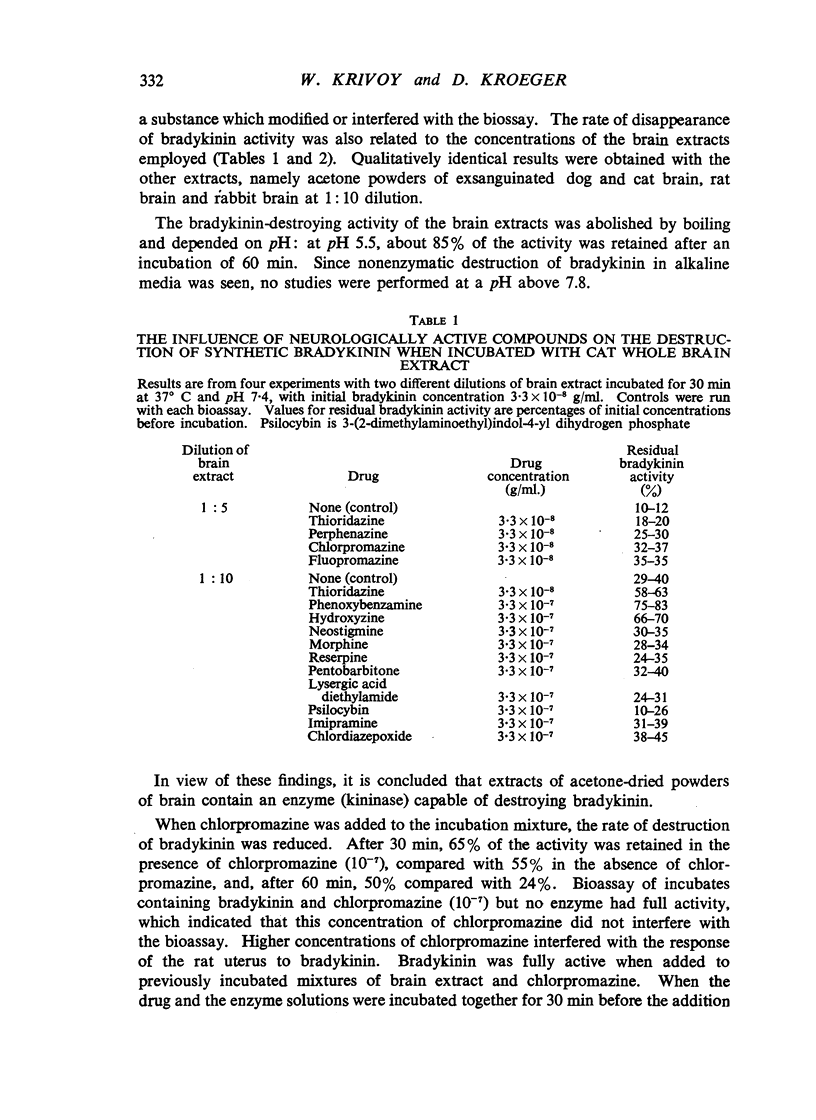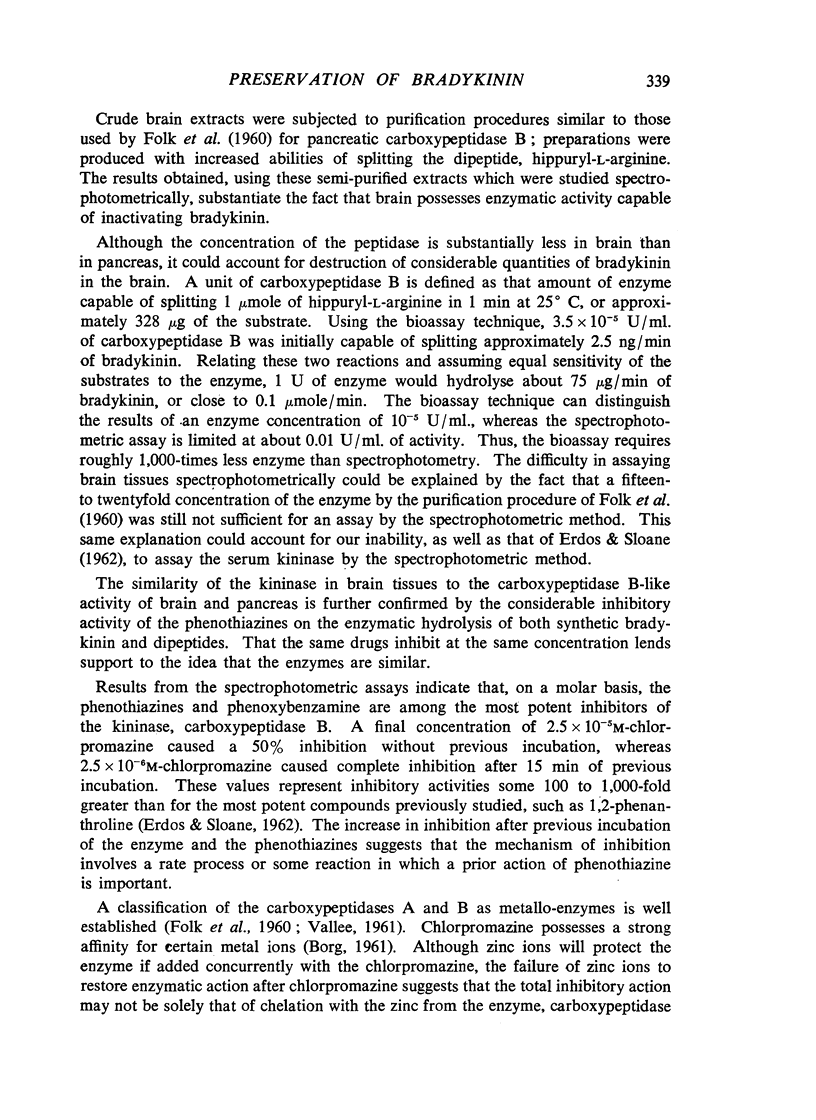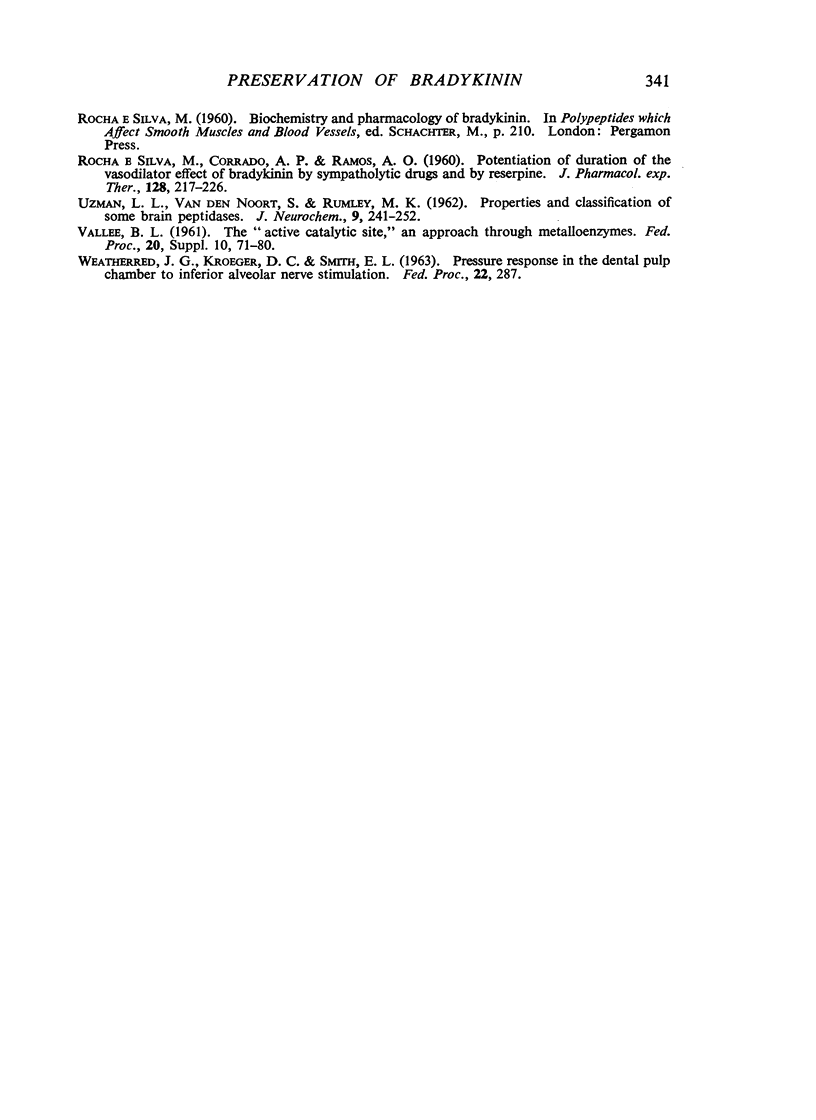Abstract
Chlorpromazine and phenoxybenzamine have been shown to potentiate the actions of bradykinin in vivo. To test whether this phenomenon could be due to inhibition of the enzymatic destruction of bradykinin, bradykinin was incubated with either tissue extracts or with carboxypeptidase B. Bradykinin was rapidly destroyed by acetonedried powders of brain and serum of various animals as well as by purified carboxypeptidase B. The rate of disappearance of bradykinin activity was decreased in the presence of phenothiazine derivatives, phenoxybenzamine and hydroxyzine, but not by compounds of a larger group including other psychotropic drugs, tranquillizers and ganglionic and adrenergic blocking agents. Spectrophotometric studies of the hydrolysis of hippuryl-L-arginine confirmed the presence of a carboxypeptidase B-like activity in brain. The substances that acted as inhibitors of bradykinin destruction were also enzyme inhibitors as measured by this technique. Previous incubation of carboxypeptidase B with phenothiazines and zinc ions greatly reduced the enzymatic inhibition by the phenothiazines, which indicated a possible chelating action by these inhibitors on the metalo-enzyme carboxypeptidase B.
Full text
PDF












Selected References
These references are in PubMed. This may not be the complete list of references from this article.
- ERDOS E. G., SLOANE E. M. An enzyme in human blood plasma that inactivates bradykinin and kallidins. Biochem Pharmacol. 1962 Jul;11:585–592. doi: 10.1016/0006-2952(62)90119-3. [DOI] [PubMed] [Google Scholar]
- FERREIRA S. H., ROCHA E SILVA M. Potentiation of bradykinin by dimercaptopropanol (bal) and other inhibitors of its destroying enzyme in plasma. Biochem Pharmacol. 1962 Dec;11:1123–1128. doi: 10.1016/0006-2952(62)90190-9. [DOI] [PubMed] [Google Scholar]
- FOLK J. E., PIEZ K. A., CARROLL W. R., GLADNER J. A. Carboxy-peptidase B. 4. Purification and characterization of the porcine enzyme. J Biol Chem. 1960 Aug;235:2272–2277. [PubMed] [Google Scholar]
- HOOPER K. C. The catabolism of some physiologically active polypeptides by homogenate of dog hypothalamus. Biochem J. 1962 Jun;83:511–517. doi: 10.1042/bj0830511. [DOI] [PMC free article] [PubMed] [Google Scholar]
- KRIVOY W. A., LANE M., KROEGER D. C. The actions of certain polypeptides on synaptic transmission. Ann N Y Acad Sci. 1963 Feb 4;104:312–329. doi: 10.1111/j.1749-6632.1963.tb17676.x. [DOI] [PubMed] [Google Scholar]
- LLOYD S. Vascular responses of the rat to bradykinin. Br J Pharmacol Chemother. 1962 Dec;19:503–507. doi: 10.1111/j.1476-5381.1962.tb01455.x. [DOI] [PMC free article] [PubMed] [Google Scholar]
- POPE A. The intralaminar distribution of dipeptidase activity in human frontal isocortex. J Neurochem. 1959 Apr;4(1):31–41. doi: 10.1111/j.1471-4159.1959.tb13171.x. [DOI] [PubMed] [Google Scholar]
- ROCHA E SILVA M., CORRADO A. P., RAMOS A. O. Potentiation of duration of the vasodilator effect of bradykinin by sympatholytic drugs and by reserpine. J Pharmacol Exp Ther. 1960 Mar;128:217–226. [PubMed] [Google Scholar]
- UZMAN L. L., VAN DEN NOORT S., RUMLEY M. K. Properties and classification of some brain peptidases. J Neurochem. 1962 May-Jun;9:241–252. doi: 10.1111/j.1471-4159.1962.tb09446.x. [DOI] [PubMed] [Google Scholar]
- VALLEE B. L. The "active catalytic site," an approach through metalloenzymes. Fed Proc. 1961 Sep;20(3):71–80. [PubMed] [Google Scholar]


